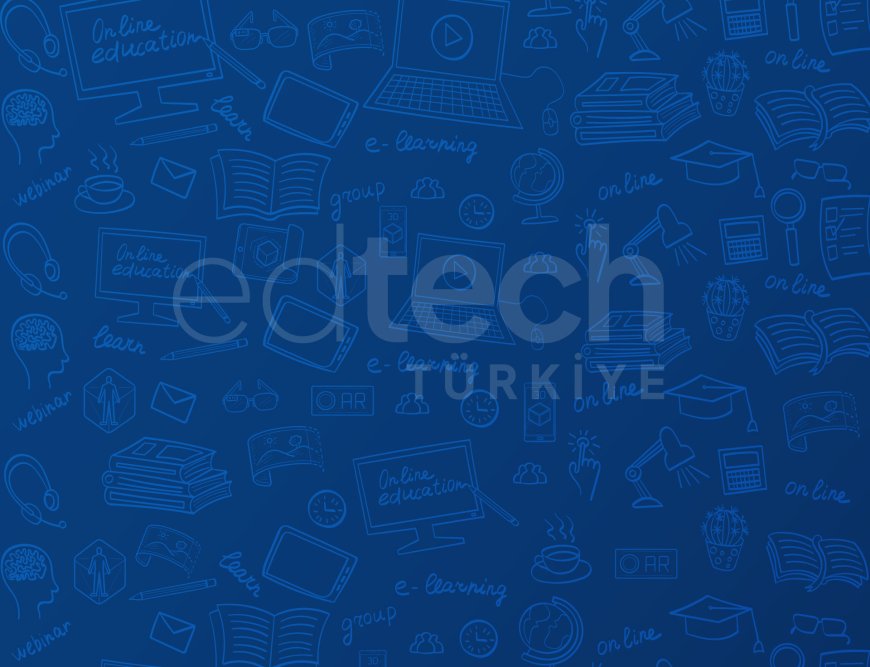Digital Learning Ecosystems: Revolutionizing Education
Discover how digital learning ecosystems create personalized, accessible, and interactive learning environments. Learn how to build and optimize your digital education strategy!

Welcome, EdTech Türkiye audience!
In an era where technology advances at an unprecedented pace, education is not just adapting—it’s leading the way. Digital learning ecosystems are at the heart of this transformation, redefining how students engage with content, collaborate with peers, and access education anytime, anywhere.
This article will explore the concept, importance, and implementation of digital learning ecosystems, providing a roadmap for educators, institutions, and learners aiming to build a modern, efficient, and inclusive learning environment.
What Is a Digital Learning Ecosystem?
A digital learning ecosystem is a network of interconnected digital tools, platforms, and resources designed to enhance learning experiences and engagement. By leveraging technology-driven education models, digital learning ecosystems enable:
- Personalized learning paths
- Flexible and accessible education
- Collaborative and interactive learning experiences
- Data-driven insights for continuous improvement
Why Should We Build a Digital Learning Ecosystem?
1. Personalized Learning Experience
Not all students learn the same way—some are visual learners, while others learn best through hands-on experiences. Digital tools allow:
✔️ Adaptive Learning Platforms – Adjusts content difficulty based on student performance.
✔️ Interactive Videos & Modules – Enables learners to pause, rewind, and review material at their own pace.
Impact: Increased motivation and engagement, resulting in better knowledge retention.
2. Accessibility & Flexibility
Digital learning ecosystems break down barriers to education, offering:
✔️ Remote Learning Opportunities – Education is accessible regardless of location.
✔️ Flexible Study Hours – Ideal for working students and lifelong learners.
✔️ Inclusivity for Disabled Learners – Tools like closed captions and text-to-speech features enhance accessibility.
Impact: Learning becomes more inclusive and adaptable to individual needs.
3. Enhanced Collaboration & Communication
Students and teachers can interact seamlessly through:
✔️ Instant Messaging & Forums – Quick student-teacher and peer-to-peer communication.
✔️ Collaborative Documents (Google Docs, Office 365) – Enables real-time teamwork on projects.
✔️ Virtual Project Rooms – Dedicated spaces for group discussions and brainstorming.
Impact: Strengthens teamwork skills and knowledge-sharing among learners.
4. Data-Driven Decision Making
AI-driven analytics track student progress and engagement, offering insights on:
✔️ Areas of Struggle – Identifies which topics need more focus.
✔️ Real-Time Feedback – Helps students adjust learning strategies immediately.
✔️ Personalized Resource Recommendations – AI suggests additional materials based on performance.
Impact: Allows teachers and administrators to optimize curriculums and teaching methods.
5. Increased Engagement & Motivation
Interactive content and gamification elements transform learning into an engaging experience.
✔️ Gamification Features – Badges, points, and leaderboards create a fun learning experience.
✔️ Interactive Quizzes & Polls – Boost student participation.
✔️ Virtual Reality (VR) & Augmented Reality (AR) – Brings abstract concepts to life through immersive experiences.
Impact: Encourages active participation and long-term engagement.
How to Build a Digital Learning Ecosystem?
Step 1: Define Educational Goals
✔️ Identify learning outcomes – What knowledge and skills should students acquire?
✔️ Choose teaching methodologies – Project-based learning, flipped classrooms, etc.
✔️ Set evaluation metrics – Use automated tests, portfolios, and peer reviews.
Step 2: Choose the Right Tools & Platforms
When selecting e-learning tools, consider:
✔️ User-Friendly Interface – Must be intuitive for students and educators.
✔️ Integration Capabilities – Should work seamlessly with existing systems.
✔️ Cost & Sustainability – Budget-friendly and scalable in the long term.
✔️ Security & Privacy – Must protect student data.
Step 3: Ensure Seamless Integration
✔️ API & SDK Support – Allows customization and expansion.
✔️ Single Sign-On (SSO) – Avoids multiple logins across platforms.
✔️ Automated Data Syncing – Ensures real-time updates across all systems.
Step 4: Provide Training & Support
✔️ Offer workshops for teachers and students.
✔️ Develop video tutorials, guides, and FAQs.
✔️ Assign mentors to assist with tech-related challenges.
Step 5: Collect Feedback & Stay Updated
✔️ Conduct surveys & focus groups for continuous improvement.
✔️ Track emerging trends in education technology.
✔️ Maintain a flexible system to adapt to new innovations.
The Future of Digital Learning Ecosystems
Building a digital learning ecosystem is not just about integrating technology—it’s about revolutionizing education to ensure students receive the best possible learning experience.
Why Should Turkey Invest in Digital Learning Ecosystems?
✔️ Educational Equality & Accessibility – Enables equal access to learning resources.
✔️ Global Competitiveness – Equips students and institutions for international success.
✔️ Innovation & Entrepreneurship – Encourages students to develop new ideas and businesses.
✔️ Economic & Social Growth – Advances in education contribute to national development.
Join the Digital Learning Revolution!
Are you already using a digital learning ecosystem in your institution?
Share your insights and experiences with us! Let’s collaborate, innovate, and shape the future of education together.
Copyright Notice
All content on this website is protected under copyright laws. Unauthorized copying, distribution, or reproduction of any part of this content is strictly prohibited. All rights reserved, and any use requires prior written permission.